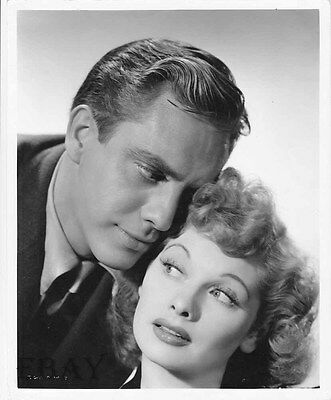In 1929, MGM released the first “Broadway Melody” film. I haven’t seen this movie, but it is notable for being the first sound film to win the Oscar for Best Picture. In a story as old as time, due to the success of the first Broadway Melody film, MGM continued to release films under the ‘Broadway Melody’ banner. These films were a good vehicle for MGM to show off their musical talent, with Eleanor Powell, Jack Benny, Frances Langford and Buddy Ebsen appearing in Broadway Melody of 1936. Broadway Melody of 1938 saw the return of Powell and Ebsen, along with a teenaged Judy Garland, Robert Taylor, and George Murphy. The final film in the ‘Broadway Melody’ series was Broadway Melody of 1940. This film re-teamed Powell and Murphy, and paired them with big star, Fred Astaire, who was just coming off his successful 10-film partnership with Ginger Rogers.

Broadway Melody of 1940 features Astaire and Murphy as the Broadway dance team of Johnny Brett and King Shaw, respectively. At the beginning of the film, they are performing for free in a dance hall, having been unable to book any paying gigs. One could assume they are volunteering their services in hope of being “discovered.” The non-paying venture proves to be fruitful for one part of the dance team–Johnny. Producer Bob Casey (Frank Morgan) sees Johnny’s dancing and thinks that he’d be perfect as the partner of his big Broadway star, Clare Bennett (Powell).
When Bob approaches Johnny to offer him the role, Johnny mistakes him for someone from whom he’d borrowed money. To throw off his creditor, Johnny gives King’s name instead. King ends up being offered the role of Clare’s dancing partner in her next production. The middle act of the film sees Johnny coaching the less talented King and help him learn his routines. King is very lackadaisical throughout rehearsals and is not taking his big break seriously–much to the frustration of Johnny and Clare. To make matters worse, King’s ego is out of control, leading him to drink heavily and become unreliable.

Intermingled with the main plot are two specialty numbers. The first one, aka “the good one,” features famous juggler Trixie Firschke. She is fantastic. She effortlessly juggles plates, balls, balances a ball on a mouthstick, and even bounces a ball on her head while juggling. It is truly mesmerizing to watch. Then there’s the other specialty act, aka “one of the most excruciating and annoying things I’ve ever seen.” The horrible specialty act features Charlotte Arren auditioning to be an opera singer. Researching Arren, I learned that she was a vaudeville performer and her horrendous opera singer audition was her schtick. She was acting this way on purpose. This scene is so irritating, I fast forward through it. Give me Jules Munshin pantomiming how to make a niçoise salad, any day–just to give you an idea of how annoying this act is. Give me Gene Kelly and Phil Silvers’ obnoxious “Heavenly Music” number (that I consider one of the worst musical numbers of all time). I would rather watch both of those routines back-to-back than ever see Arren’s “Audition” routine again. I cannot imagine paying to watch a vaudeville show and having to see/hear this. I’d definitely need to have my basket of produce ready for throwing.

Eventually, as one can suspect, something happens in the plot that allows Fred Astaire and Eleanor Powell dance together. If it didn’t, what would be the point of this movie? Fred and Eleanor appear in the last act on a gorgeous all black, highly reflective set. They look like they’re floating in space. Juxtaposed against the black set are Fred and Eleanor in all white. It makes for a very striking scene. Their tap work is exquisite, as is the final number, “Begin the Beguine.” This is hands down one of the best musical routines ever committed to film. Fred said that Eleanor was the only partner he was intimidated by, because she was so good. It definitely shows in this routine, she matches him step for step and the routine is absolutely flawless and impressive.
George Murphy’s dancing is fine, and maybe in another film, he would have been a standout. But Broadway Melody of 1940, he is the third best dancer in the film. He’s just there to lend a little conflict to the film, but this is Astaire and Powell’s film the entire way. Broadway Melody of 1940 has a fairly pedestrian plot, but the musical numbers more than make up for it. The entire closing number, all six minutes of it, is one of the highlights of the musical film genre. I would recommend this film, if only for the “Begin the Beguine” number.











